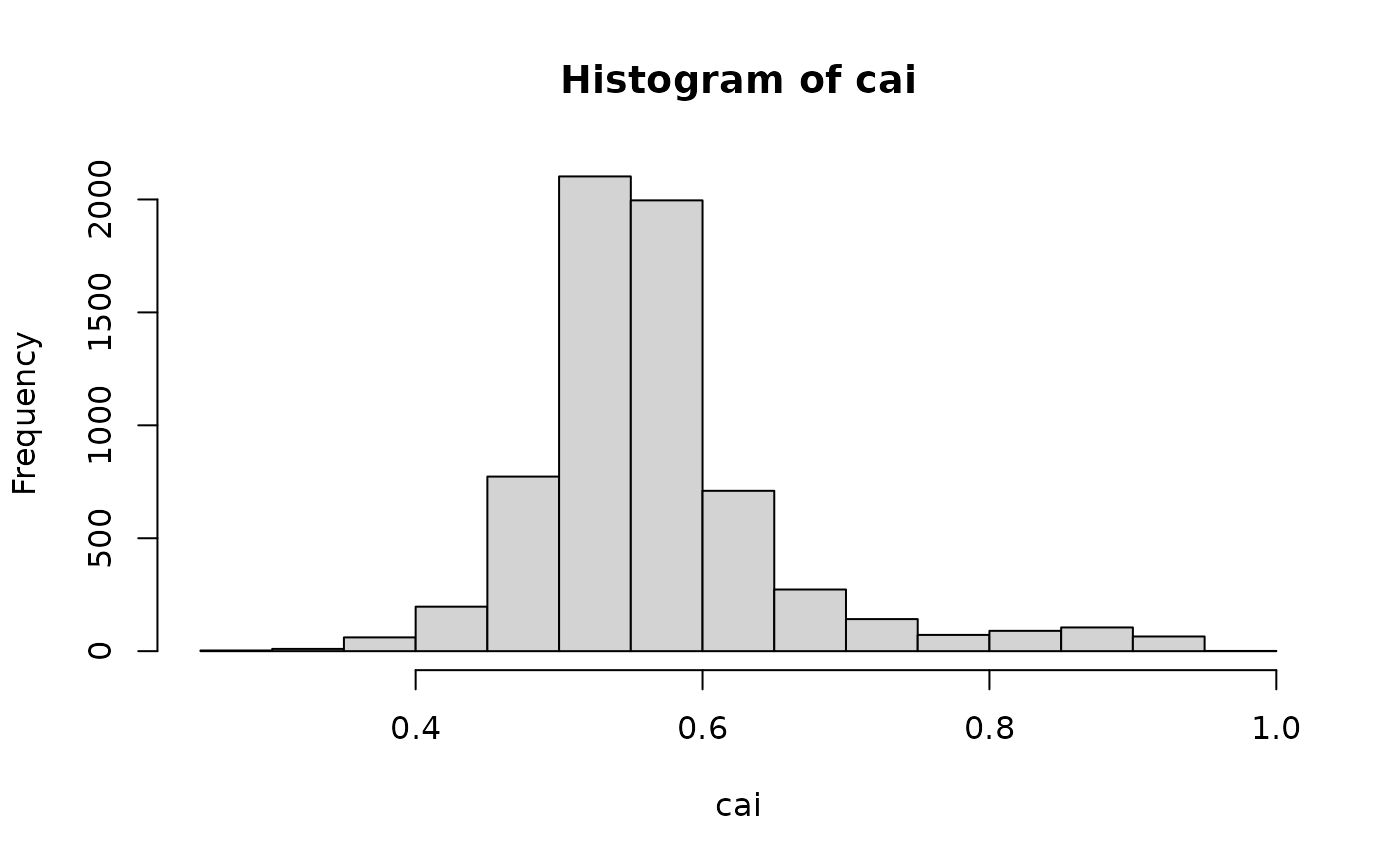get_cai calculates the Codon Adaptation Index (CAI) for each input
coding sequence. CAI measures how similar the codon usage of a gene is to
that of highly expressed genes, serving as an indicator of translational
efficiency. Higher CAI values suggest better adaptation to the translational
machinery.
Arguments
- cf
A matrix of codon frequencies as calculated by
count_codons(). Rows represent sequences and columns represent codons.- rscu
An RSCU table containing CAI weights for each codon. This table should be generated using
est_rscu()based on highly expressed genes, or prepared manually with appropriate weight values.- level
Character string specifying the analysis level: "subfam" (default, analyzes codon subfamilies) or "amino_acid" (analyzes at amino acid level).
Value
A named numeric vector of CAI values ranging from 0 to 1. Names correspond to sequence identifiers from the input matrix. Values closer to 1 indicate higher similarity to highly expressed genes.
References
Sharp PM, Li WH. 1987. The codon Adaptation Index–a measure of directional synonymous codon usage bias, and its potential applications. Nucleic Acids Res 15:1281-1295.
Examples
# Calculate CAI for yeast genes based on RSCU of highly expressed genes
heg <- head(yeast_exp[order(-yeast_exp$fpkm), ], n = 500)
cf_all <- count_codons(yeast_cds)
cf_heg <- cf_all[heg$gene_id, ]
rscu_heg <- est_rscu(cf_heg)
cai <- get_cai(cf_all, rscu_heg)
head(cai)
#> YPL071C YLL050C YMR172W YOR185C YLL032C YBR225W
#> 0.5590442 0.8212905 0.5112301 0.6534497 0.5670395 0.5485641
hist(cai, main = "Distribution of CAI values")
